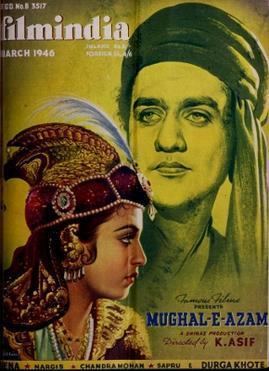Year founded 1935 | Frequency Monthly Founder Baburao Patel | |
 | ||
Staff writers Sushila Rani Patel (as Judas, Hyacinth) | ||
filmindia was an English monthly film magazine covering Indian cinema. Started by Baburao Patel in 1935, filmindia was the first English film periodical to be published from Bombay. The magazine was reportedly run "single-handedly" by Patel, who wielded power through this medium to "make or destroy a film". Its most popular column was "The Editor's Mail" answered by Patel. The magazine featured film news, editorials, studio round-ups, gossip, and reviews of different language films, mainly from Hindi and regional cinema and affiliated reviews from Hollywood. His articles included siding with the lesser known cinema workers like the technicians, extras and stuntmen.
Contents
Patel met the painter S. M. Pandit around 1938, and asked him to design the covers for filmindia. One of Pandit's assistants, Raghubir Mulgaonkar, was also a designer in the same periodical. Both of them worked with Patel at filmindia through the 1930s and 1940s.
The magazine "created a sensation" on its launch with its "canny mix of rumour and review, observation and opinion" and Patel became a "celebrity" equal to the film stars he wrote about. The magazine reading target was the "elite readership", including college going youth. Termed a status symbol with college students, actor Dev Anand said of his Lahore college days, "boys in the campus used to carry copies of filmindia along with their textbooks. It was their Bible". Ramachandran and Rukmini state that "filmindia was the only magazine that counted in those days". It remained in publication from 1935 to 1961.
History
The first film periodical "exclusively devoted to cinema" was established in India in 1924, with the Gujarati magazine Mouj Majah by J. K. Dwivedi. Its success began a trend with the Bengali language Bioscope, published by Shailjananda Mukherjee in 1930, Filmland an English language weekly published from Bengal since 1930, and the Hindi Chitrapat in 1934, by Hrishamcharan Jain from Delhi.
In 1935, on his thirty-first birthday, Baburao Patel (1904–1982), started filmindia, with a small 'f' in the name, which was published initially by D. K. Parker and B. P. Samant and edited by Patel. "The very first issue of filmindia became a huge success and Patel gradually took over the monthly journal" making filmindia achieve "an unprecedented cult status". The magazine remained in publication till 1960, when Patel's interest in nationalism and politics made him launch "a national magazine" called Mother India. Patel found it difficult to run two periodicals simultaneously and he made the decision to shut down filmindia and focus on Mother India.
The magazine focused not only on Indian cinema but also published critical commentary on politics. It reviewed about 49 films annually on an average, out of which 31 were claimed to be poor, 13 indifferent and about 5 watchable films. It had monthly sales of about 32,000 copies. filmindia was one of the few Indian fan magazines sold in Western countries.
Filmindia ended publication in 1961. It had its Indian publication office in Bombay and had offices both in Calcutta and London.
Contributors
Influence
Columns
Popularity
According to author, journalist Bhawna Somaya, "It was the most popular film magazine of its time, widely appreciated for its bold stand on current issues and a scintillating style of writing. It was said that Baburao's column made and broke careers”. His "acid reviews" were dreaded by producers and directors".
Dev Anand stated, "When I first came to Bombay looking for a break in the movies, somewhere within me lurked a desire to meet the man and have a look at this magician who meant the Indian movie industry to me. Baburao Patel made and unmade stars. He established or destroyed a film with just a stroke of his pen. That much power he wielded then".
Quote
Baburao Patel was famous for his sharp wit, and according to Habib Tanveer he was discerning and wrote "absolutely frankly", "totally ruthlessly and funnily". He was often criticised and in a self- authored chapter stated:
"I took criticism as my main selling point. That was the best feature of filmindia. And the "Editor's Mail". Filmindia was the only paper that counted in those days. Distributors would not take delivery of the prints after reading my reviews. But it never affected the seeing public. The box-office was never affected".
